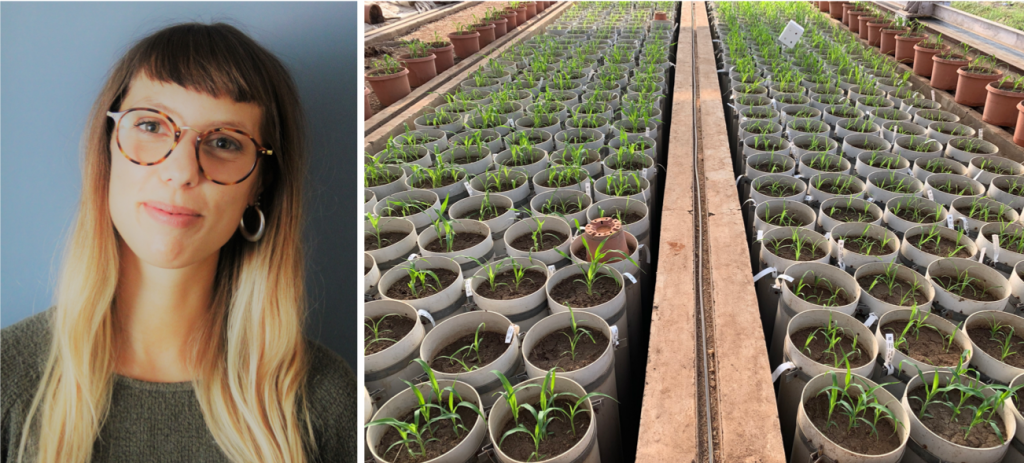Francesca D’Agostini gets the 3rd prize !
- Post by: Doris Barboni
- September 29, 2021
- 1 Comment

Francesca d’Agostini is now a PhD student at CaSEs – Culture and Socio-Ecological Dynamics,
Campus de la Ciutadella, in Barcelona, Spain.
At the 12th IMPR she presented her work on Understanding the relationship between the physiology of water transport and phytoliths production in selected c4 crops: an experimental approach.
Abstract. Phytolith formation is related to the plant’s transpiration stream which in turn depends on water availability. As such, phytolith analysis have previously been used to explore past water regimes in archaeobotanical samples. Nevertheless, for crops of agricultural interest in drylands, like C4 grasses, the mechanisms of phytolith formation are not yet completely understood and there is debate whether genetically and environmentally controlled morphotypes are informative about water availability. Accordingly, modern samples of traditional drought-adapted landraces of Sorghum bicolor, Pennisetum glaucum and Eleusine coracana have been cultivated to test how phytolith production respond to different water regimes. Plants have been cultivated inside lysimeters during the hot season in ICRISAT (Patancheru, India). The facility is similar to the real field regarding plant spacing, soil availability for water exploration and general growing conditions, plus provides the opportunity to control the water availability and the transpiration rate. The first set of phytoliths analysis concentrated on leaf samples, being the site of most transpiration, and consequently were assumed to produce the strongest variability among the different phytolith morphotypes. The results on phytolith concentration and morphotype assemblages highlight that biosilica accumulation in pearl millet and finger millet is positively related to transpiration and, therefore, to total water added. On the contrary sorghum demonstrates to be an active accumulator of silica showing a null relation with the water transpired. Despite this, some sorghum landraces display an opposite trend in phytolith production suggesting the already presented hypothesis of the existence of mutants with low silica accumulation. Genotypic variability explains differences in biosilica accumulation better than water treatment alone, confirming the idea that phytolith production could vary among and but also within C4 species. Morphometrics do not respond to the water availability letting suppose that the size as the shape of phytoliths are not influenced by environmental parameters. Future steps will include the analysis of stems and chaffs to construct a complete picture of how water availability affects phytolith production and to better assess the potential use of C4 phytoliths for archaeological studies on past agricultural systems.
This work will be published soon!


This is a fascinating study. I am looking forward to seeing its publication.